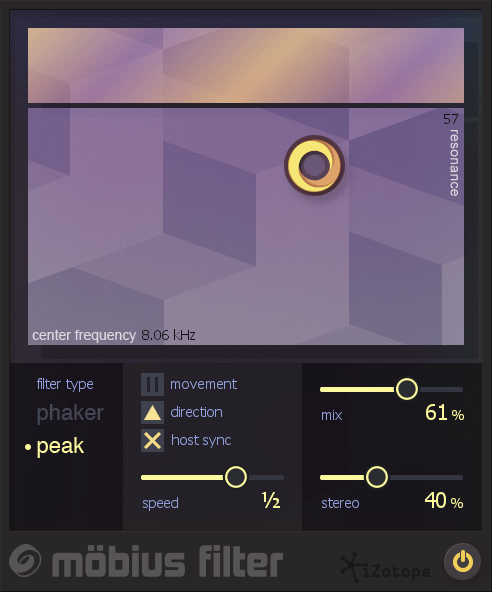Simon: Hey, welcome to Studios 301 Podcast, you’ve made it through to episode two. Today we are joined by the magnificent Paul Brandoli. You’re magnificent, I have decided. One of Australia’s foremost top line writers, vocal producers, songwriters as well, apparently part-time hobbyist Barista.
Paul: Yes, one dare to dream, yes. Coffee is my thing
Simon: Live that dream
Paul: I’m asked what is the secret to great song writing; it’s coffee.
Simon: I am English and so it’s 17 cups of tea every hour kind of thing
Paul: No disrespect, but tea for me is like having a dull conversation, it just doesn’t have the same kind of punch
Simon: Great, well thanks for joining us for this podcast, it’s going to be one of our shorter ones. How are you doing?
Paul: I am doing great. How are you?
Simon: I’m good. Are friend’s references is still a thing? Too soon?
Paul: No, no. Nothing is too soon
Simon: Oh dear. We miss you Joey.
Paul: Unless you watched the episode, I don’t know
Simon: I do. I was especially proud of that show as well for being able to, for being a show that was doing literally the thing that it was talking about, it was very, very self-aware and it played it very well.
Paul: I agree
Simon: And he does a wonderful character show of himself.
Paul: He plays himself brilliantly.
Simon: Yes. I wonder with that, like how close to himself it actually is.
Paul: We’ll never know.
Simon: I would dare say.
Simon: I don’t know if you ever saw that movie, This is the End, with like all the sort of Judd Apatow kind of comedians sort of hanging out together. And then like Micheal Cera from Arrested Development, you the real score and he comes on and he is just like a bad-ass, so it’s like, “Oh man, I hope that’s what you are like in real life.” And all of your bumbly character that you play on TV is just a character. But it turns out you are just a boss in real life. You know, so music… That’s alright, a warm up is good I think.
Paul: You know, TV is always a good bonding point.
Simon: It is, it is. Well it’s funny, like years and years ago the little known trade secrets of me, I used to do… the way that I started it was totally not pop and totally not vocal-centric. I came up as, like a lot of guys did, as a rock and metal guy, playing in metal bands and stuff like that when I was in my teenage years. And it’s funny, everyone is like, “I can’t believe you do that. How do you get on with these people? Aren’t they crazy?” I said no. Most metal kids are like… just talk about The Simpsons and Futurama and you’re like friends for life, and they are usually like the nicest least standoffish people that you will ever come across. Because they are just doing a niche thing, probably for the fun of it. And it’s like, “What? You’re really into this? Awesome. Really?” “Yeah, totally man. I love this like you do.” Wow, okay.
So I guess the idea with today is basically just kind of engineers talking nerd and all
Paul: Talking shop
Simon: Yes, basically. I know it’s not supposed to be an interview per se, just like a conversation with people. And I’m quite excited about this one
Paul: Likewise
Simon: Obviously we sort of have quite a lot in terms of what we do in the music world, so it is probably going to get dorky I would dare say. But I guess it would be amazing to start, just tell us a little bit about yourself and how kind of how you got to where you are right now.
Paul: Well I started a long time ago. And I was writing and producing for an act and suddenly I got thrown into the act, and we had no performance experience whatsoever. But songwriting was always my thing, and working with singers became clear that evidently that was my thing too. We released an album independently in December, probably the worst time you could ever release anything
Simon: Well, especially back in the day that used to be off limits for Christmas, right?
Paul: Exactly. But TripleJ just picked it up and started really supporting it and playing it. And we had a whole album, we didn’t even pick a single, they did, and it just kind of really took off and we got signed to Sony for a major recording contract. And I really had an early glimpse of the power of the right song at the right time. It didn’t take the world on by storm but it was enough to kind of in still in me that this is what I want to do for the rest of my life. So it’s always been a process of just writing artist development, working with vocalists and getting into the psychology of singers. Because it really is a psychology, I’m sure you agree, yes?
Simon: They are a fragile beast.
Paul: A beautiful, fragile beast, yes. And I don’t know, to me the two things go hand in hand. I love writing and vocally producing and maybe getting an element, I’m sure you would agree, finding an element in a singer sometimes that they might not even know they have. But taking an element of themselves and magnifying it, not trying to make them into something that they are not, but just saying, “Did you know you could do this?” Just add it to your repertoire if you want to use it in the future for reference, you know.
Simon: I think that’s especially a really interesting point that a lot of the time guys like us are hired. There is the facility for essentially everyone to kind of do most of what we do from their bedroom kind of thing. We are not in the business so much of really large tracking sessions, meeting 100 inputs on your console kind of thing, it’s a mic into a computer kind of thing. But I guess the reason that a lot of people come to guys like us is looking for that fresh take or that next step up, there is only so… you know, I know what I think I can do, but waiting for someone to kind of draw out that kind of next level thing, be it spotting, you know, hey, if you stop trying to be this guy and you just try to be yourself, or we like really as you say kind of magnify this thing – that one thing there, that’s the coolest thing that I think you do. I think we should get more of that, being able to have that outsider’s view on what is often a very sort of closed personal experience for most of the singers.
Paul: Definitely. And I think also knowing when ‘if it’s not broke then don’t try to fix it either’. If it’s working, it’s working, you know. And knowing how far to push someone, I think it is a trust thing, would you agree? In terms of there needs to be a level of trust there.
Simon: Well absolutely. It’s generally kind of quite long days in a very much as one-on-one kind of thing. I mean, I don’t even really do that much work with bands per se anymore so it’s not even that, you know, there are four guys at the back of the room sort of intently watching while a singer sings. It’s just sort of you and that person for the next three days just hanging out. And it goes beyond just the sort of “I hit record and you do the singing”, there is a lot more – you lunch together, you have coffee. There is a whole sort of building of a rapport there, and as part of that, hopefully developing as you say that trust to be able to sort of say, “Look, I’ll tell you when I think it is good. And when I say it’s not good it’s not that I think that you are not good; it’s that I know that you can do better” and take that message as it is actually intended there.
Paul: Definitely. I think where our paths might kind of diverge in the sense that you’re obviously recording artists and their material. Whereas I do a lot more top lines, I write top lines in the whole scenario. For a singer to come in for a top line, it’s not about where the singer per se is envisaging, it’s not about the singer’s vision, it’s about the vision for the record and where the singer fits into that. So in many ways that kind of aspect, it is creating a character that might feel totally foreign to the vocalists. But at the same time I think that’s where we grow as artists, when we are pushed out of our comfort zone. Probably the hardest thing you could give a singer/songwriter is someone else’s song to sing. Because I think, this is a generalization, but a lot of singer/songwriters will write stuff that’s kind of comfortable for them, that’s in a kind of safe range where and when, you know, do change keys in songs for singers and so forth
Simon: Yes, it’s been known to. Especially if there is very obviously sort of a question mark there, but it is always kind of nice as part of my, what I would call the warm up procedure. I definitely get them to do just like a couple of start to finishes. And again as you say, most of what I do, the material is kind of already written so it is pretty easy to get them to just kind of knock one or two out under the sort of the guise that this is just a warm up and it’s very clear immediately even with kind of warm up voice. If it’s just like, “Look, if you do get that note it is not going to be convincing in any way, or like we just can’t get down that low in the verse, that’s just like…”
Paul: Have you ever called a session saying it’s not going to happen?
Simon: I don’t think so. I have heard of people who are sort of like, “You’re not prepared enough. Go home and come back when you are.” I have definitely had ones where maybe from a health point of view, either it’s Day 3 or something like that or it’s the middle of winter and they are bit sick and it’s like, “Look, we could battle on for the next four hours, but we could beat all of this in an hour four days from now” kind of thing. And the result would be much better. SO yes, I suppose if you have called them for that kind of reason but usually not for the “You’re not ready for this” kind of thing. Usually, hopefully once they have sung it for an hour, they know the song pretty well
Paul: Yes. I think from my perspective it’s not necessarily maybe they are not ready, but they are not the right person for the song, because can’t change the keys for top lines because it’s for a given set music bit. So sometimes it might be out of their range or you can modify the melody if it works. If something is working, if there is traction, I am happy to see it through. But if it’s not the right thing you kind of got to call it I think
Simon: Yes and I can definitely sympathize with that I suppose. I suppose the slight other side of the coin there is that I’m paid at least have a go and try to get a result on it, and so there are a few technical things that we will try – there is as much warming up as you can do, there is doing things in short phrases. For those that are old enough to remember vari-speeding tape machines and things like that. For them I suppose the modern equivalent of like, “Look, maybe for the chorus I will just take the instrumental and we will pitch it down a semi-tone, to that point where it’s not just right on your break, but like just one note below.” And then I will just have to melodyne the chorus up one semi-tone.
Paul: How do they do it to live?
Simon: Most people sort of down a step, tune down the whole tone when they are live these days anyway
Paul: True. But do you find it’s a process sometimes of wiring as well that once they hit a note that they may not have thought they could, the wiring is established, the connection is established and in future they probably can?
Simon: Well 9 times out of 10 I’d say you are totally right. You will go and see them 6 months from now and they have sung it every night for the last 6 months, and it’s just like, “Yeah man, I don’t know what I was stressed about.” The thing that I find very funny with that, and this is such a huge part I guess of what we do and that thing we kind of touched on before, the delicacy of what the singing animal is. If you play guitar, inasmuch as there is a personal touch to it, if the guitar sounds like shit you can just be like, “Oh, it’s the guitar.”
Paul: Can we say shit?
Simon: Yes, sure. Apparently we can say it a lot. But yes, if the guitar sounds like trash it’s like, “It’s just the guitar today. I am obviously the great the guitarist, this is just a terrible guitar” kind of thing. Whereas with that thing with the singer it is a personal thing, there is nothing to hide behind, it takes a certain type of crazy to be that sort of person that stands out in front of a whole crowd of people with no armour and just be like “I’ve got a tiny, thin microphone stand and that is the only thing that sort of is the barrier between the audience and me.” And as a result of that the mind games and things that people almost kind of talk themselves into, the number of times where I’ve had conversation with people who have said, “Oh, look. I am really having trouble hitting this note. I think that’s too high for me.” And it’s like, “You know that’s not the highest note in the song, right? You know that there are other spots you’re hitting it, no problem? You’ve just convinced yourself that this note is ‘too high for you’, and that’s like let’s just practice.” And I’m a huge fan of not giving singers too much to think about, because there isn’t that barrier between them and the instrument; they are instrument. It’s like there is only so much brain power for a certain number things, and so this is why I guess personally I am not a huge fan of doing vocal takes in whole songs passes kind of thing. And I think most people these days are kind of like, “Yeah, we’ll work on the verse and and then once we’ve got that, you know.” And I am a firm believer in that, for 99% of songs allowing the singer to really hone in and focus on being in that moment. And so if there is a note where they are like, “Aah look man, I think the link between the (makes singing sound) and the way that I get up there is just a bit awkward for me.” It’s like, “Cool, let’s not waste 10 takes of you singing the whole song where you’re clearly worried about this one note that happens a minute-and-a-half in. And it means that the 1:29 leading up to that just sounds like you have spaced out. Let’s just work on that bit.” And I guess as I said this is where… those are the moments I guess where I earn my money. If it is in an awkward place or there is an interesting kind of movement there that you workshop it, it’s not unheard of to have to sort of try and change the phrasing a little bit or workshop where the breaths and those sort of things go. And I’ll definitely have a go at it, there will definitely be times where it’s like, as you say, maybe you are not the person for this or you have chosen someone who just doesn’t have these notes in their range kind of thing. And hopefully from a pre-production point of view that has been worked out. If it does get to that there are times where… I suppose maybe half-half of what I do is artists who are the artist themselves, and there are other times where it’s artists where they are the feature artists kind of thing. And I guess especially where they are the artists themselves then you can give them the option of “”Hey look, let’s take it down a key or something like that.” Most of the production elements we deal with these days come from kind of media or something there so they are taking the track half tone down or something like that. It’s not as difficult as it might have been back in the days, especially with kind of too much out of take. I mean obviously each key has a certain mood and you don’t want to stray. I’m a big believer in there is a certain magic in something, there is a certain reason that you loved the song the first time you heard it particularly as a production pitch or something like that, there is something really cool about that so you obviously don’t want to stray.
Paul: No, especially with dance music. There are certain keys that just, don’t go two keys
Simon: Yes. A minor. I always thought that was the really easy one to play chords in
Paul: It depends on the genre. Like House would be different to kind of harder kind of genres. Because of the nature of the top lining game I can’t really give a singer a guide vocal of the track because I am sending out someone’s unreleased music, and you never know where that could land. Sometimes the singer might get excited and send it and suddenly it’s all over the internet and I get in trouble. So I basically just get them in unprepared. And 9 times out of 10 I feel like that’s a good thing because sometimes an artist will bring their own kind of idiosyncrasies into it which might not be suitable for the vibe that we are going for, and if they practice it locks them into a certain headspace. So again, getting them out of their comfort zone really works.
Simon: And I guess this goes back a little bit to the trust that we were talking about before. This feeling where it’s not just you versus me, we are on a journey together. So I guess the question I have for you is, let’s say I am artist X and we have never worked before and I walk in the door, how do your sessions tend to kind of run from there? How do you go about sort of building that trust for those that aren’t really familiar with the top lining style sessions? Are you more sort of I record the music that comes in the door kind of thing? Can you just walk through a bit of a standard kind of day, and I suppose from your point of view how you are trying to inject yourself and let the artist maximize your talents.
Paul: It really is subjective, it really depends on the situation, it depends on the artist, and also chemistry, chemistry is a big thing for me because that is related to trust obviously. If you feel like you have a rapport happening you just kind of wing it, I do anyway, in terms of like ‘how much can I push this person’ in a positive way and there is that growth, there is that kind of challenge which is a positive thing, and at what point could that become intimidating or could have that kill the vibe? Because that is the worst thing; the singer has got to be comfortable… I have to tell you though, I use my hands sometimes
Simon: Oh, that’s fine. I wish there was a video of it.
Paul: Yes. So if it is someone that is not experienced I try to be really kind of considerate of that, but at the same time you can’t compromise the quality, especially as our names are going on there too. So anything that is connected to your branding, that’s something I try to teach the kids as well, anything you do has got to be of a certain caliber. And if you record something and you don’t like your vocal or you don’t like the song then you shouldn’t release it, in a perfect world.
Simon: I’m always telling people my number one rule is don’t settle
Paul: No near enough and good enough.
Simon: Near enough does nothing
Paul: No. And then other times if you have a rapport with someone where some singers that I have worked with before, if there is a friendship there or there is a relationship there, I can be a bit of a Nazi. Sometimes you break them down to build them up again, but again, in a positive kind of way; I’ll positively break you down.
Simon: I suppose that goes into my next question. How much do you find that your input level differs when it’s a let’s say a reasonably inexperienced artist that you haven’t worked with before versus one that you have worked with before where you’ve kind of got a bit of a feel for what they are trying to do, how much more willing are you to let them take the reins and guide the process? Do you find the majority of younger artists require a lot of hand-holding through the process especially say for example if this is their first time co-writing? Do you find that most people kind of have a knack for it, is there a bit of explaining of this is going to work that’s kind of required?
Paul: I think again it is very subjective. If vocally they are just naturally on the right tune, it’s great because then you just focus on takes and vibes and characters and stuff and you don’t have to worry about technique. Sometimes I actually do have to get, I don’t know if you do, but started with more of a croak or end it with less of a vibrato because they have been programmed it to sing a certain way that may not be on point with the direction that you want to go with. A part of my job is like A&R-ing as well in the sense that I’m being sent to music bed, I’m aware of the artist’s sound and what the label want to do so I kind of have a good idea of what is required. So it’s all about again coming to that standard and getting that kind of texture out. So yes, it really depends. Sorry, I know I keep coming back to that comment but I find, I don’t know you may agree or disagree, 95% of singers regardless of whether they are starting out or they are established, they really welcome the feedback, they really appreciate more of a direction because I think a lot of singers are used to going into a studio, not with the vocal producer per se, but with just a situation where you go in, record, and most of them do welcome the feedback.
Simon: I would agree with you. I have had a lot of comments from people, the people who seem for whatever reason to like what it is that I do, I like to bring to them and I like this and so… I don’t feel like, I’m sure how you feel about this but I kind of feel like I don’t feel like I am doing anything special. I just feel that if I were paying someone and they we’re doing any less than what I was doing, I would be mad, I would be so mad.
Paul: Agree.
Simon: And obviously I can reflect back to early days of engineering and I was terrified of vocals. As I said I don’t come from the background of being a singer, I come from being a player and there was always this intimidation of, well I know that the vocal is the important thing and essentially what happens if I ruin it. And I guess for people sort of moving through the engineering or production careers from just ‘oh I’ve learned how to scoop out a kick drum and I have learned how to make a big pad that does a thing’ to feeling comfortable working with what is almost seen as like this niche thing that we do, this kind of vocal thing. I guess is there any words of wisdom that you would give people? Obviously coming from someone with a singing background as yourself it maybe came a little bit easier, but is there anything you can kind of suggest to people in terms of ways ease themselves into the process or to get a feel for… I guess the question I get asked often is how do you know when you’ve got it? What does a good take sound like? How do you know when it’s there?
Paul: I think it is intuitive. I think obviously there are technical aspects sometimes that you have to get rid of or incorporate, and it really depends on the vocalist. But it really is a matter of just capturing that moment. And I think if you are going to be a singer and if you want to make a career out of recorded singing, because recorded singing as I am sure you would agree, from live singing are two different monsters. Live singing it’s about projection and it’s about performing, whereas with recording the mic is there. For me it’s more about light and shade and texture and storytelling. Would you agree? I think vocals today per se are more character-based than technique-based.
Simon: Well I think especially if you look at some of the artists out there, or even the classic example would be a TV show like The Voice or something like that, that is… I guess what I tell people that I am looking for in singers is something where like I could have not heard your new song and it comes on the radio and I immediately know that it is you regardless of the song writing. You listen to a Katy Perry song, regardless of whether it is one of the older Katy Perry ones or one of the new ones that Sia has written kind of thing, the tone and the shape of that voice you immediately know it’s her kind of thing. And as you say especially with the blending of different genres and essentially anything can be pop music these days, be it Shepherd or be it something from the country world or be it something from the urban world, there is something about that tone quality to the voice that we kind of latch on to. So yes, I would definitely agree that character is a huge part these days in defining an artist, almost more than the material.
Paul: Almost. The songwriter in me is saying, “Hey”
Simon: There still has to be an amazing song there.
Paul: I think seriously the two go hand-in-hand. Sometimes I have been asked on occasions to write a top line and get someone else to record it somewhere else, and the control freak in me goes, “Oh, you know I would rather kind of record it myself”, if possible; if not I trust whoever I am working with. But I like to work with young singers or inexperienced singers. I can hear someone’s tone, I don’t know about you, but I can hear someone’s tone not having met them and think all I need is a great attitude and an attitude of openness and wanting to kind of grow and make something better. If I can do that and get that and I can hear your tone, I feel we can do great things. It’s again the psychology of singing.
Simon: Absolutely. As part of that I find particularly when I listen to demos of artists that I haven’t worked with, especially younger more up and coming artists, I find that there is often this thing where I can almost tell you the records that you listen to growing up kind of thing. There are the kind of obvious things like if you do the Christina growl or something like that, there are things like that
Paul: Or Mariah
Simon: Actually having said that, Asta has definitely got the Mariah going. There are a few people around that can still do that.
Paul: There is a whole generation now that, Sia, you know?
Simon: Absolutely. And I have worked with a couple of people that sound amazingly in that kind of style. But I find even in terms of say for example they are moving through notes when they sort of do a little grace notes beforehand, you can hear the ones that have grown up in the auto-tune generation where even the sort of like little grace notes before your main note are actually still definitely in key. There are the older school ones where maybe it’s only a little half step even though, you know. And I suppose my question would be how much do you try to separate an artist from their influences to enhance their own quality inside? Or do you sort of say “Well, look that’s part and parcel of how you are” and we’ve got to find the middle ground between these two?
Paul: That’s a good question. It really depends. If it’s a top line situation, again, the artist is there to create a character that will benefit the entire project, because they are just a part of a big wheel in that. And it’s a collaborative thing which is exciting. If it’s an artist project and I am working on an original artist then obviously it’s more about them, their storytelling, their perspective, their unique perspective, musical perspective. So I would say okay, what feels comfortable for you? I would approach it in a totally different way and kind of try to fill some gaps if any needed to be filled, or just let them do their thing. If I feel… again it comes back to judgment, doesn’t it? If you are making music on a mass level for a mass market it’s about putting yourself in that world and doing it your way, but in a way that people can connect. And that’s technically not singing on top of the song or if you feel that there is a part coming up where you need to push and you’re going “aaah” like that and you lose me, you know. Because you get into technical mode, it’s like ‘I want to hit the note’ and it’s not about ‘oh I’m telling a story’. And I think people pick this up. The average person listens to this, sometimes they don’t know why they disconnect, but they do disconnect. And I think it’s up to guys like you and me to say, “Okay, this is why this is happening, this is how we can fix it up.”
Simon: Absolutely. One of the earliest things that we learned in life, right when we’re just a couple months old is how to respond and react to the tone and timbre of voices, whether that means danger, whether it means things are happy, whether that means you are not really being truthful with me, whether it means that this is a heartfelt moment kind of thing. And so even the very most average of listeners is remarkably astute to all of those kind of things, and again as you said, they might not be able to put a finger on why they sort of tune out for a minute or why it doesn’t feel like it resonates with them. But as you say they are definitely aware of it and our job definitely involves a little of having to pick that apart and put the technical hat back on.
Paul: It does, and to a point. I’m sure you would agree you get to a point where everything I have just told you, forget it, and then it’s in there and just do your thing. You cannot kind of approach a whole song thinking, “I’ve got to put more croak in at the start and less vibrato at the end” or just you know, this and that. You need to kind of let that go at some point and hope the magic happens I guess.
Simon: Yes. I suppose in terms of the way that I would approach a section, say for example if we are tracking I know there’s definitely an element of, you know, we will do a couple takes and we will kind of warm into a section, we’ll get just a kind of vibe feel for it. And as part of that there is always some kind of amazing moment they will never recreate. Obviously these days it’s not tape, you just sort of record everything; everything gets saved somewhere. But yes, there are a couple of long takes, there will be some sort of nugget of gold that we’ll put that on the back burner. “Alright let’s do some takes and we are going to really focus in on some of these technical details. Alright we have definitely got to the point where I think we know the size and shape and I think we know all of the brain power that goes into it. Great. Alright I need you to stop for 10 seconds.” And I am genuinely like, “I need you to jump up and down and shake your arms and just like go (makes audio sound) for the next 10 seconds. Great, okay cool. Now we’re just going to do like two more where you just literally, as you say, forget everything that we have just talked about.” Because there is a sort of programming that goes on even if you are not now thinking about the details they will still sort of be in the back and maybe you will get a nice kind of mid-range in terms of like it’s got most of the technical stuff right, but it’s just got that vibe back and you can always get that because you have what it takes as well. Great. Actually that (makes audio sound), we manage to not have that on that one take so we will just kind of fix that bad boy up just there.
Paul: But how cool is it at the end of it when the vocals the sound bigger? I think a great vocal should sound bigger than you, in terms of like you are listening to the vocal, you have got the person recording it in front of you but you listen to that vocal and it could be it’s someone else or it’s just a big, it sounds like a record and you haven’t even kind of edited it or processed it, and I think that is an amazing kind of moment.
Simon: Yes, the sounding like a record of thing is definitely is a huge part. The times where I get asked this question as I was talking to you about a little bit earlier, the when do you know it’s right kind of thing, it’s like my gauge for all of these things again coming from I suppose more the engineering background rather than being a singer and technique background it’s like it’s either it sounds like a hit record or it doesn’t. And if it doesn’t then the technical hat goes on and I will break it down. And I find that to really be a question of how hard should the singer sing or is the melody right or is the emotion right. So they could all be right or they could just be that one tiny thing and it might be your job to search for it, or it might be your job to just get out of the way if it’s perfect.
Paul: But how do you approach a situation where you are working with say, and I’ve asked you this before, a superstar where there are other factors have come in, in terms of like how far can you push them, how far can you go or do you just stay within a certain kind of territory, you know?
Simon: I suppose a superstar kind of level person is an interesting bracket to be working in because possibly more than most other artists you will ever work with there is very sort of predetermined sound, there is a bubble of material that not just people in a niche are seeing but like the entire world is fairly aware of what this person sounds like. And I suppose as parts of conversations with A&R or label people, whether it’s like ‘yes, that’s where we want to go with this’, I find that in that case artists were usually fairly forthcoming if they are looking to make a change in some way, they usually feel like they need to explain it to everyone. And so they will definitely go like, “Hey, look we are going for something different on this. Let’s just have a go and see what happens.” I kind of feel that knowing a little bit about what an artist already sounds like, especially if they’ve got a very well work-shopped sound, it makes it a little easier to kind of have an idea of when you’re getting there. There is also that thing that kind of happens when you work with someone really, really amazing. Your job almost weirdly becomes a little bit more difficult in that if you work with someone who is not fantastic it’s like, “Well this is the take we are going with because that’s the one where you sung it right, and we are obviously not using the 10 where you didn’t sing it right. This is the one we might have to try and get a couple more just so that we’ve got a couple options.” When every take that comes out is like, “Whoa, that one could be the one, or that one could be the one”, the really honing down into exactly what is amazing becomes so much more of a micro detail kind of thing.
Paul: Yes. That’s a nice problem to have though
Simon: It’s a lovely problem to have. But I find in terms of the working relationship and rapport with artists of that level there is always this element of kind of assumed trust which I have found is really nice. There is this element of we are all in this room because we are professionals, and we are professionals that are apparently capable of a certain quality of work. So even if it’s someone you haven’t met there is a little bit of assumed trust there, and hopefully you can then do a really good job and make sure that was founded on a good reason. But any new artist that you work with any level of standard there is always that little bit of, you know, how is this relationship going to work? What is it that you need me to be? Do you need me to be the nice guy where it’s like, “Look, that was really, really close, we are definitely going to get that on the next one. Let’s just have one more go.” Or do they need you to be that person who is like, “That’s the worst thing I’ve ever heard, go do another one before I…”
Paul: Are you generally good cop or bad cop?
Simon: I’m usually good cop. I’ve heard you’re bad cop most of the time.
Paul: No comment. No, but it’s got to be positive. I think the worst thing…
Simon: I’m the biggest cheerleader that you’ve ever seen when it comes to sessions. And people who know me and haven’t been in sessions with me, the first time that they are there sort of hanging out, I think I have had it remarked to me that ‘it’s like you almost become this other person. There is this kind of like caricature of yourself where everything is like, “Everything is 100.” it’s almost like you become Richard Simmons or something like that where it’s like you can’t help but…
Paul: Did you just say you become Richard Simmons?
Simon: I did. But you know there is this element where it’s like I’m going to cheerlead you so hard that there is no way that… you’re not even going to be capable of not giving me good performance, because there is just no other option.
Paul: I think when I started, and I’m not a trained singer, I’m not a singer, I actually do not like my voice. But when I was in the group I did do some vocal stuff for the first time, and I know how I don’t want to be treated. When you are on a mic and you are working with an engineer you want to be challenged, I want to be challenged because that’s how I grow. But there is a certain way of approaching it where you can be a bad cop in the sense that ‘I feel you are capable of more’, not ‘that’s not good enough’.
Simon: Well I think that’s a great point to talk about. So assuming that there are people who are looking to develop their skills in kind of vocal production or that style of what we do, what are some things that people can avoid? How do you phrase your feedback to make sure that you get what you need and you are not off-siding the artist. You may not realize that you are, but what are some no-nos?
Paul: In terms of from a vocal producing no-nos?
Simon: I guess in terms of how you give feedback. And of course it’s going to be different for everyone in terms of whether they need you to be that good cop or bad cop. But let’s take your particular brand of bad cop, how do you bad cop in a way that still feels constructive?
Paul: Again it depends on the artist. If I am working on a total reprogramming and rewiring of how an artist sings and it is something that the artist has requested me to do and I am in that situation, it can be quite monotonous. And I try to avoid… I hate dropping into every line, in terms of like trying to get… because I just feel that some point you lose perspective. And it could be a good take but it could be good in comparison to everything else that was done but not stand up on its own.
Simon: Like Number 17 was the best but it’s still not a good one.
Paul: Yes. But if it means like you’re strengthening someone’s register in a certain kind of key or teaching them not to use vibrato or overly exploit the vibrato or just to show vulnerability, and it can get really detailed. As soon as it starts becoming that the singer feels like they are not good enough or it becomes not a positive tone, I think that’s another one. But there is a fine line between that and pushing someone. Because often or not you push them and you get that result and they go, “Wow, I didn’t know I could do that.” And then when you’re finished and they hear it, 9 times out of 10, especially the younger vocalists, it’s like, “Wow, I love that.”
Simon: I’m so proud of that
Paul: Yes. And I am proud of not just the vocal, but I am proud of that reaction. It’s like, you know, the thank you thing is like no, the canvas has got to be there to work with, if it’s not there we can’t create it. So it’s just sensibilities and, again, if I know someone and I’ve worked with them a long time the bad cop can kind of come out and say, “Let’s do it again, you don’t have that.”
Simon: And I imagine that come to you a little bit for that bad cop as well, they know that that’s…
Paul: Well they come back
Simon: Well, they know that that’s what gets the results, so that’s the trust building already done.
Paul: Yes. Well, I love working with certain artists that have like… I have worked with artists that have won vocal competitions as well in that respect and they have picked up things in the sessions and it that’s how they sing live. And to have that influence on people as well, it’s great, it’s a positive thing. It’s all about I guess positivity I guess in that respect. Anything that makes you feel you’re not good enough it’s a fine line. “You’re not good enough, no, you can be better” that doesn’t mean you’re not good enough, and it’s the psychology – singing is 90% confidence, I’m sure you would agree.
Simon: Absolutely.
Paul: So anything that would deteriorate that confidence is not positive or productive. I don’t believe in demo vocals. If I have got a singer in there and we are going for a take, let’s go for a lead vocal.
Simon: Absolutely. That was going to be a question I was going to ask. As part of the process do you just ‘if we are putting it down we are putting it down’ kind of thing, there is no point settling and just being like, “Oh, this is how it goes and we will do it again later on.”
Paul: No. I actually had someone who is starting to top line and record vocals ask me, “So, how much do you do?” I said, “What do you mean?” He goes, “Are you just doing it rough?” “No, it’s got to be there. They’ve got to hear it.”
Simon: And I imagine particularly kind of in the more sort of dance related genres there is that assumption because you can cut up and affect anything, so it’s like the thing that you hand over, you’re not going to get another chance at doing that probably 9 times out of 10. It’s like this is the thing and they are going to put it in the track and love it and you’re never going to be allowed to touch that again.
Paul: Well, yes. And that’s the thing too – I have worked with a lot of DJs and producers who they are not vocal producers, they are not versed in how to process vocals; they don’t need to be, it’s not their thing. So I treat the vocals most of the time, I put my own EQs, my own compression, I try not to overdo it because you’ve got to give them room to move.
Simon: You know that they are going to put a CLA vocals on it afterwards.
Paul: Exactly. But I very rarely give out dry stems with no treatment.
Simon: Yes, I would definitely agree for that side of the industry. Where when I have a pretty good idea that’s what’s going to happen, depending on how detailed it is, it might just be a set of dry acappella and a wet acappella, or if there is like obviously two or three different kind of lines that overlap, maybe I would give you kind of one of each with the assumption that this is pretty much drop-in ready. You’re paying us to not have to do anything else to this, other than maybe taste adjustments. Yes, I color my mixes really bright so I will make the vocal a bit more bright, or I want a really radio thing so I’m going to put a radio filter on it.
Paul: What do you use to tune?
Simon: I have always been a Melodyne guy. Interestingly I’ve had other conversations about this with people and when I started sort of studio work all the guys who were just kind of one rung above me, I sort of come from working in a big studio and sort of coming up through the hierarchy kind of thing. And all the guys that were above me had been doing it for a while and so they’re all Autotune guys because that’s what they knew. And just as I was starting to kind of get interested in it was when the very first version of Melodyne came out. And I thought, “Okay, my point of difference is I’m going to be the guy who learns this really well because all of these guys don’t know how it works. I am going to spend a good solid couple of weeks just really making sure I know it.” And then for me it has always been that and I have been a huge, you know, since version 1.0, I’ve been huge. This is amazing in the level of flexibility and also I think has a lot more detail tweaking thing much less a brute force kind of way it just kind of snap everything through the grid. It affords… and I have friends that are really good with the auto tuning graphical mode kind of thing
Paul: I love that
Simon: And I just never got my head around it.
Paul: The Autoune one you mean?
Simon: Yes.
Paul: I used to use the Autotune one
Simon: It just never kind of clicked with my brain in the way that
Paul: Melodyne does
Simon: Yes. And I guess that’s a funny thing. I looked through some of the things that I use in terms of processing and there are definitely other plugins out there, there are definitely other bits of equipment and I find that there is something that just kind of resonates with you. For some reason the way that the knobs on this are laid out makes sense to my brain and I can get results really quickly. I know that there are other ones but I know that I can do the job with this one. And for some reason, I mean, it’s wonderful day in this case that I personally think that the Melodyne kind of sounds the cleanest of all of them anyway, but it’s also just really clicks with the way that my brain seems to like to do things as well.
Paul: I agree. I went to Melodyne out of necessity. There are three things that I live by – I don’t like vocals sounding tuned, unless they are supposed to. Second, I always say it takes effort to sound effortless. And third, my third life venture is I want to control the milk in my double shot lattes because that’s how I roll.
Simon: That’s fine. I guess from a technical point of view lets…
Paul: Did you appreciate the irony? You said before that we weren’t going to be talking about VSTs and then we definitely started talking about VSTs
Simon: Well you know, this is a nice ‘get to know you’ thing anyway
Paul: Are you sponsored by Melodyne?
Simon: I am not, I have no endorsements, but endorsement companies come at me. But yes, there is definitely a few kind of secret trick kind of things and I think… the thing that I tell a lot of people is that you would be amazed how good a result you can get from even the stock kind of things that… every DAW it’s got a compressor, it’s got an EQ, most of them have a Desser or that kind of thing. If you want to learn how to really get into that thing you can get amazing results with anything. The things that we have decided and chosen to use, which maybe we will dork out in a second about, are the things that we know. They are just our tried-and-tested ones, we know that we can get results sort of quickly with them. But yes, I guess some of the tuning things are the ones that you do have to be just a bit more esoteric about. Most programs don’t come with fantastic tuning things built in
Paul: But I like a specially for electronic music the aspect that you can change the tonality and, not the pitch but the formant. Yes, I love that, I love that. Not too much because it sounds a little bit too processed sometimes.
Simon: Well it just gives you that extra little sort of arrow in your quiver I suppose in terms of doing it. I actually find that quite a lot when I do rap vocals. And I do a lot of work with Australian hip-hop kind of things and as a result there is often this thing where the voice just doesn’t feel sort of heavy enough for the song kind of thing, particularly if it’s got that quite nasal thing that happens when you sort of squeeze the throat together. And the formant thing I find is amazing. If you don’t know pitch coaching just load it into Melodyne, just like 0.1 or 0.2 of a semi-tone down, you can just add this. You can almost add five years.
Paul: Isn’t it a beautiful thing?
Simon: Yes. You can just make them 5 years older and more world experienced kind of thing before it kind of starts to get weird; there are obviously kind of limits as far as you can push it with that. Although having said that, it’s weird, I have noticed the new version of Melodyne – they always used to have just a one knob thing where you can just like turn down the formant of the whole plugin, but now you sort of have to do a drag, it’s just a little bit annoying, I kind of miss that. But Version 4 does have a lot of cool stuff in it
Paul: I haven’t used the version 4 as yet
Simon: The thing that I would say changed my life in Version 4, and it may just be in the studio version or it might be in all the plugin versions, say for example you’ve got Melodyne on several tracks and let’s say you have tuned down all your work to your lead vocal, when you are doing your backing vocal you can click a button and it shows you a ghost image of where all of the bits are from the lead track even though you still have your blobs from your backing vocal but you’ve got like a set that’s grade out. So if you’re like, “What did I make the melody for this section?” Or was it, you know, especially where you go down and it’s like things are a semi-tone apart, “So where did I go with that?” Especially if you are trying to make a really nice tight backing vocals where everything is singing the same melody.
Paul: No. What about hardware though? Because I think we have discussed this in the past. I mean, you are working in bigger studios, you have a lot more access to different microphones and pre-amps and stuff, is that a help or a hindrance sometimes?
Simon: I’m remarkably sort of, I won’t say ‘stuck in my ways’ but it’s a pretty close sentiment. From a pre-amp and sort of compressor point of view I can make do with whatever is there but given a choice I have a pretty short list and it’s only kind of one or two things. And it’s not because I have necessarily gone out and tested everything; there are things that I know I can get results on and likewise they seem to work well for how my brain wants to work. If I’m looking at a valve pre, 10 times out of 10 it is the Avalon 737, partly because I started doing this in the time where it was all kind of Baby Face style production, slow jam, R&B, and that was it just sort of what everyone had and that’s what everyone used. Having said that, at the time I had that and I had the Manley Voxbox at the studio that I worked at and nominally the same kind of animal, they are pre-channel strip kind of thing with an EQ and compressor on each and they have a valve gain stage. And there was just something about the way that the Manley was laid out that just never resonated with me. And as far as I was concerned it could have sounded 10 times better and I was just not prepared to put the time in to learning it when they knew that the Avalon was just laid out exactly how my brain kind of worked. So there’s kind of that or recently I’ve kind of gone back to using the 1073 Neves as well
Paul: Neves are good, I like them.
Simon: There’s this punchy thing, and I have been the Avalon guy for years and years and years and I’m intimately familiar with the range of variables and what it can and can’t sound like. And I know some people hate them and think that they’ve got no color or…
Paul: I’ve got a 737 that I swear by. But how much do you actually process the vocals going in?
Simon: It hits Pro Tools sounding like the record if I can help it
Paul: Really? Okay. EQ, and how much compression do you put on it?
Simon: I was about to say I’d rather not say but that’s not really helpful, is it? Not from wanting to hide trade secrets but more…
Paul: A lot or not much?
Simon: Yes, definitely a reasonable amount
Paul: But you can’t go back
Simon: That assumes that you want to. I mean don’t get me wrong, if we’re doing a beautifully delicate sort of Indie Folk thing, I’m not like hitting it with 30 db worth of gain reduction
Paul: Wouldn’t that depend on what point the track is and production-wise, because obviously… my worst fear is if I overly compress this vocal going in and then the production changes and the vocals required to not kind of poke as much as it should, you can’t really go back
Simon: Yes, I suppose so. I guess there is an element. I suppose for me most of what I work on the production is pretty close to where it’s going to end up. I do leave a little bit of room for people to kind of play around with in terms of the way that I kind of set it up. So there is obviously the mic which is probably either like a Neumann M 149 or a AKG C12, my couple of first go-tos. Fetty?
Paul: I love the Fettys as well.
Simon: The 47s?
Paul: Yes
Simon: I once upon a time was really into them and I can’t even remember why I stopped using it to be honest.
Paul: They are great with male vocals.
Simon: Right. Yes. They’ve got a nice kind of air to them from memory, way more useful than 87, unless you really, really like 6K
Paul: I remember hiring from Sing Sing some mics. I had two Neumann’s, and the valve one, I can’t remember which one, but it had the term Valve box with it. And I thought with the 737 I could come up with exactly the same kind of warmth, just putting the Neumann through their 737 so I agree. It’s good to kind of… it’s like monitors, picking monitors for your studio can be the biggest head trip imaginable.
Simon: People are going to feel very sad for me when I tell them what I work on then
Paul: What do you work on?
Simon: NS10 [laughter]… Having said that NS10 is bad without a sub because obviously there is nothing below about 100 there, but as you say everything sounds terrible, it’s like man it makes you work really hard
Paul: It does. I have Focal Twins and I swear by them, I love them.
Simon: Lovely. It’s whatever you get used to basically. But yes from my point of view I guess those kind of ones, after a little bit of trial and error they are the ones that not only do I find that they are amazing for the main lead, but I find that stack well. Especially if you get into like choruses, there is a whole seven or eight layers and then there are four more layers of harmonies and things like that. Some are really the character for local mics as you start laying them on and then you just get like that character times 50. By the time those 50 tracks, there is just too much of that thing. And then I am not huge for doing the lead on one thing and the backing on another mic kind of thing. I suppose the time constraints or just making sure that anything can be kind of, you know, if actually that backing vocal take is better that we can still use that and cut it into the lead kind of thing.
Paul: How about vocal leads that you would record but because of the situation you would have to record in different studios and try to match up for the… Have you ever done that?
Simon: I’ve had to do it a couple of times. I take pretty detailed notes about everything. Like I just take photos of all the settings on the gear. I’ve just got a folder in Dropbox where I just sort of have a folder where if you have the app you can just upload them straightaway. Having said that, you might obviously not have necessarily the same thing, but at least if it’s a vocal that I started then I at least know roughly what I’m trying to match where I’m, “Okay, I know what is done on this mic so I need something that has a little bit of that character.” It’s got a valve and maybe I need to either have that, or as you say use another box to get a bit of that character in there, and know I was doing this sort of thing sculpting and know I was sort of doing it this way. There are a couple of other tricks that I have, I mean short of just air matching kind of things as if you could kind of match EQ plugins that would kind of… they are not going to do it all for you but if you can get it reasonably close. I find the biggest trick to that is matching the performance far more than matching the chain kind of thing. If it’s like, “Oh, we have just written a new chorus so we need to punch the chorus in” kind of thing, if you can make it feel like yeah, just on the day we decided we were going to use a different mic for the chorus, but it feels like it was done on the same day.
Paul: I had to punch into a verse that I recorded a year and a half earlier, and we pulled it off so you can’t tell.
Simon: And this is the thing I come up against all the time with people that do demo before they come in to do their things. And a lot of people are saying studios are getting pretty good these days where the demos are of substantial enough quality that it is definitely an option to their professional artists that demo all their stuff in a studio. And it’s like the quality is definitely good enough that we could use that, and obviously we are going to spend our time, we are going to try and beat that, we are going to try and make sure that that stays the demo and that the final stays the final. But every once in awhile there is always that, “You know, there is just something about that verse, that bridge, I’ve just winged it and now I’ve spent six months learning it and it doesn’t feel as off the cuff anymore.” One of the most difficult things I’ve find is trying to recreate the ‘there is no pressure’ thing.
Paul: What was it Phil Collins recorded in 1989 in his garage and he’s tried to recreate the vocal and they couldn’t; is that true?
Simon: I would 100% believe that
Paul: Yes, so they used the original. This could be total fake h-tech fake news
Simon: I’ve heard a similar story because he had a little studio in his garden shed and it was kind of during the break up with his wife or something and there was this, “Alright, I just need to do this to basically stay sane” kind of thing. And again, once it got picked up it was, “Oh, great, we are making the record now.” It’s like, “There is no way I even want to go back to feeling like that” kind of thing.
Paul: True
Simon: Well, I’d love to thank you for your time and sharing a little bit with us.
Paul: Awesome. I always enjoy our catch-ups. I want to sneak into one of your sessions one day, is that possible?
Simon: Yes, totally. Just tell security that you are on the list
Paul: Yeah, okay.
Simon: Alright, well until next time thanks..
Paul: I want to lend to some ‘good cop’
Simon: I definitely need to improve my bad cop. Just in life, I’ve never really got the hang of it. Great, well thanks for joining us here at the Studios 301 podcast. If you like what you have been hearing please like and share and follow us on Facebook and Twitter and all of that good stuff. If you’ve got any questions for myself, Simon or Paul, our lovely guest this week, please feel free to hit us up on the Facebook comment section and we will do our best to give you some good answers. Alright, check you next week, bye.


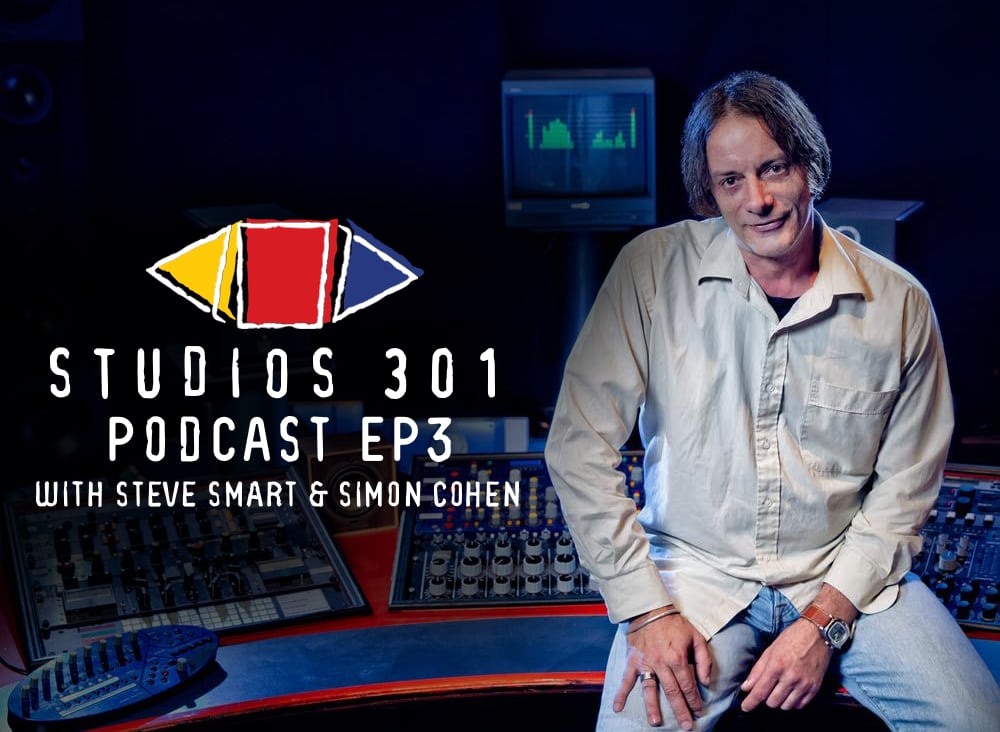
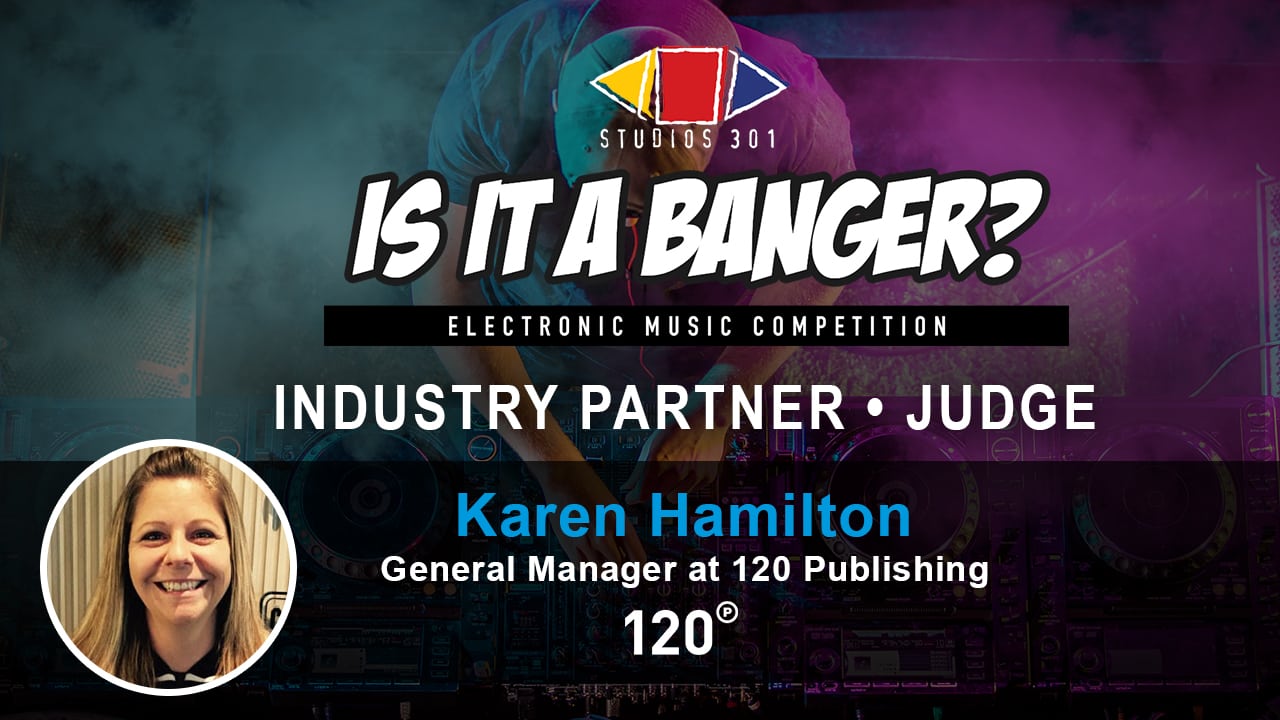

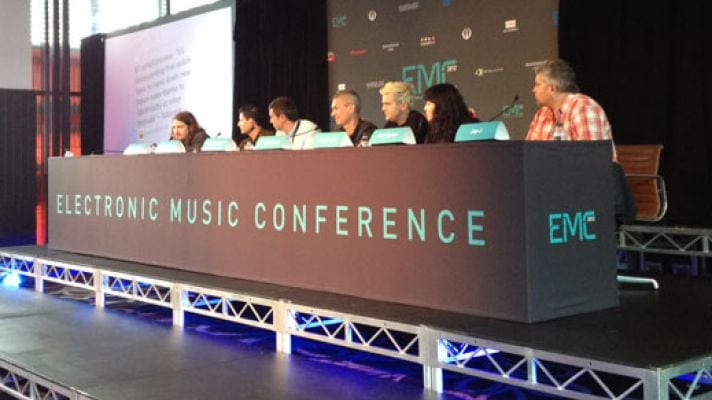
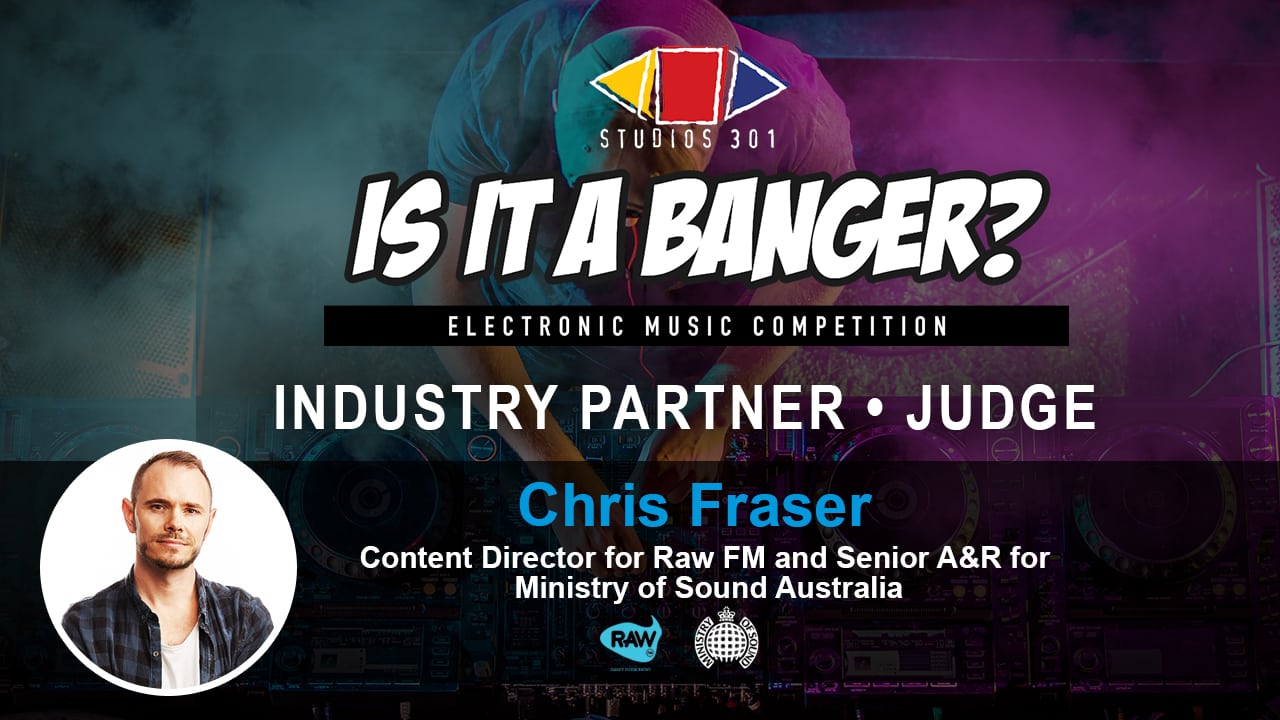

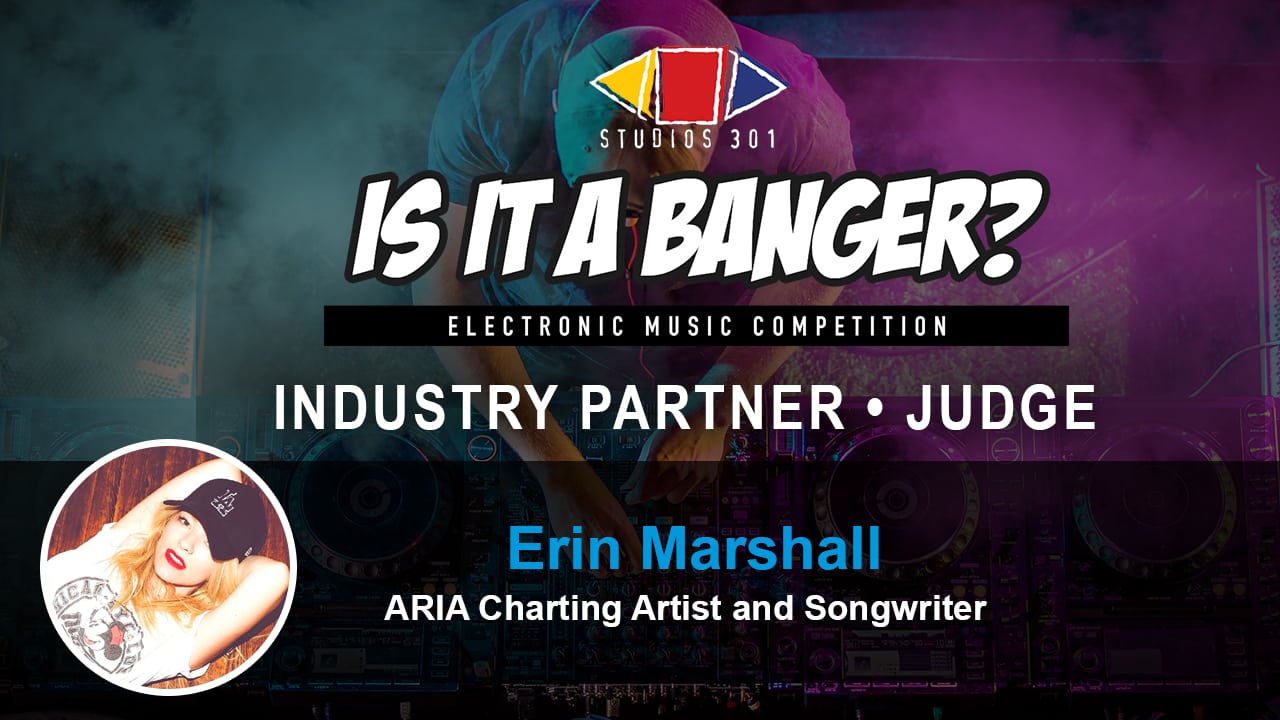
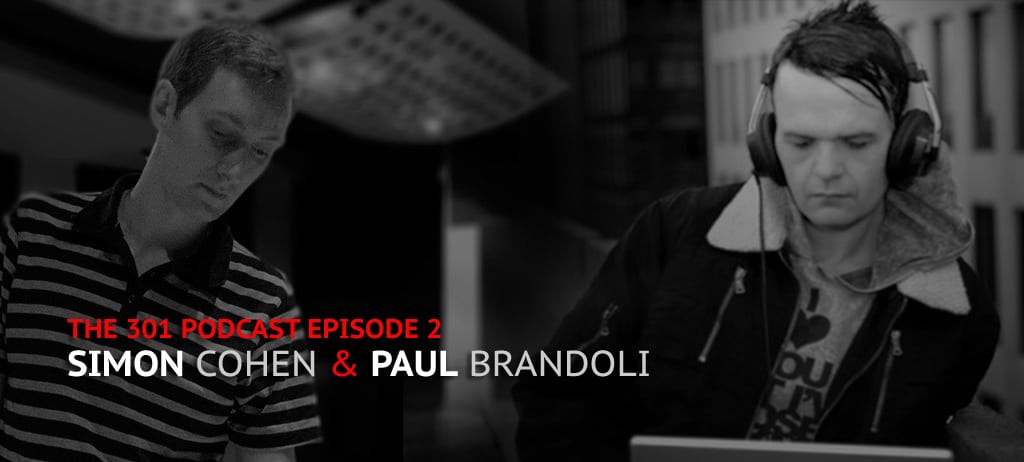
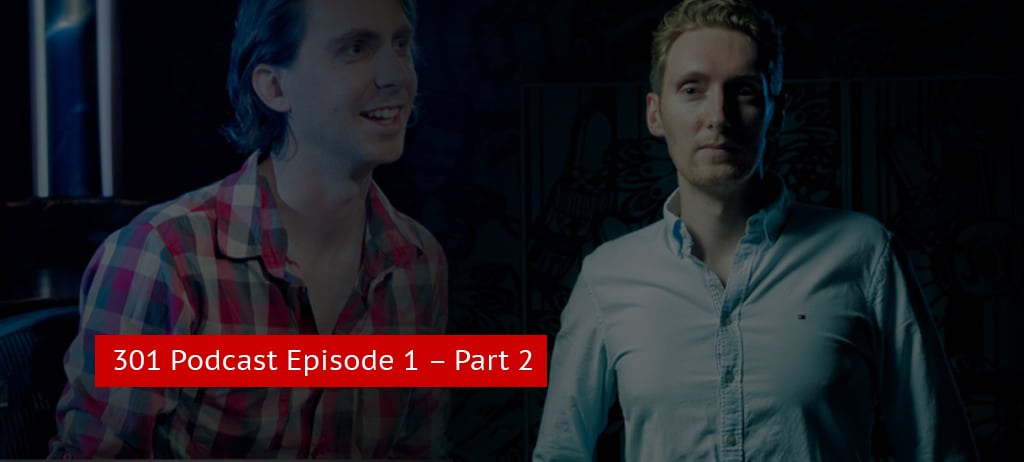
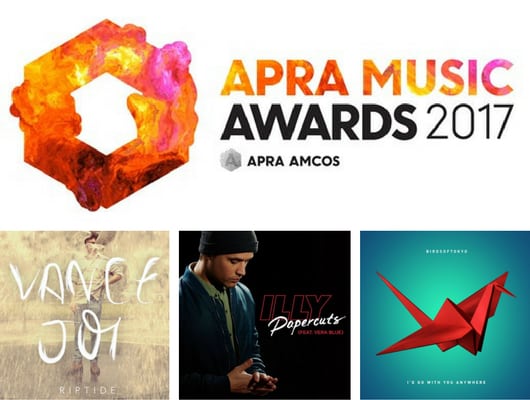
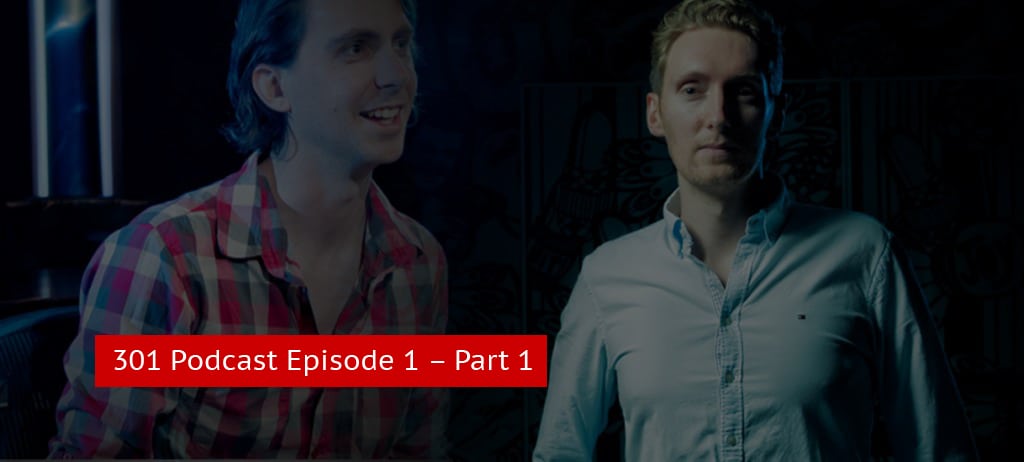


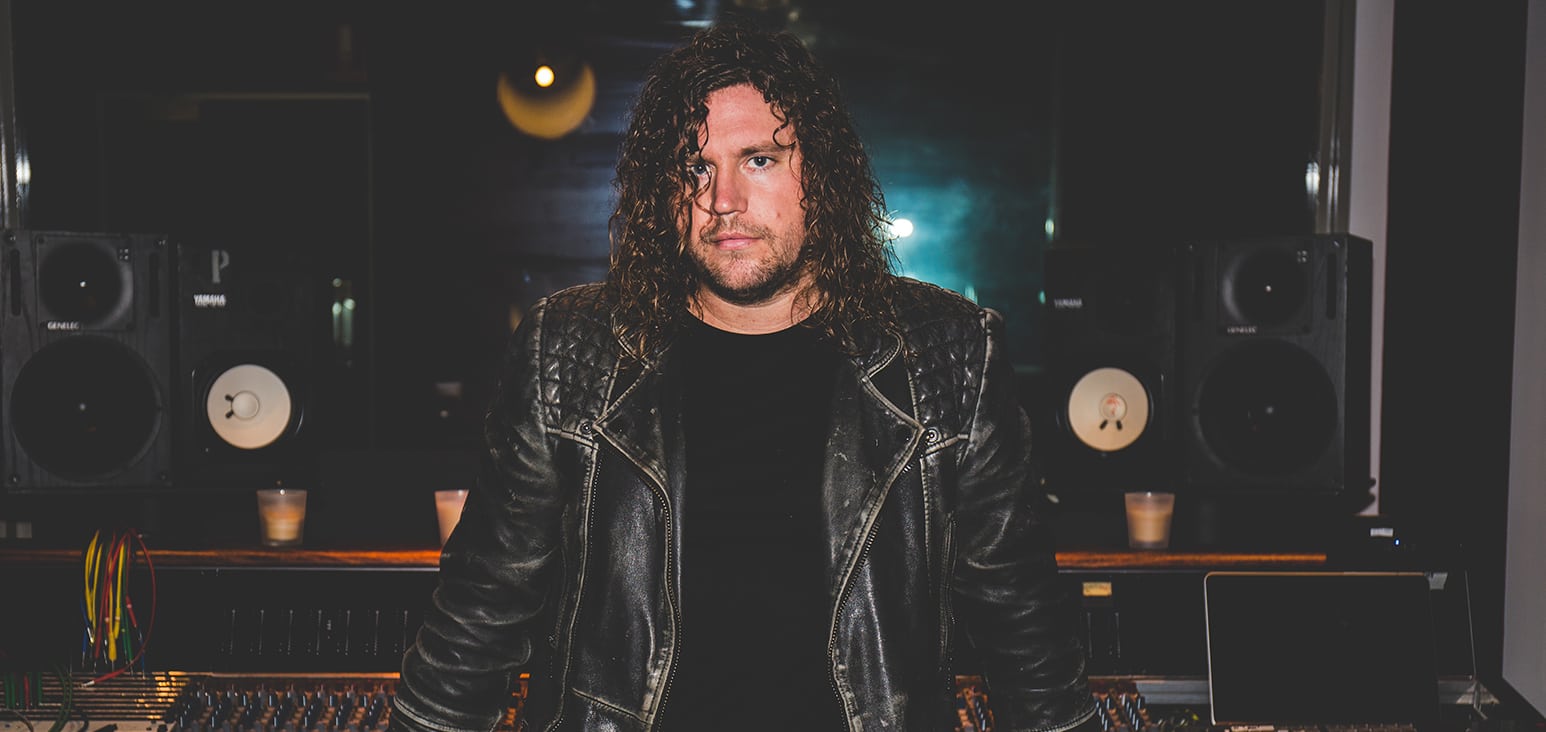
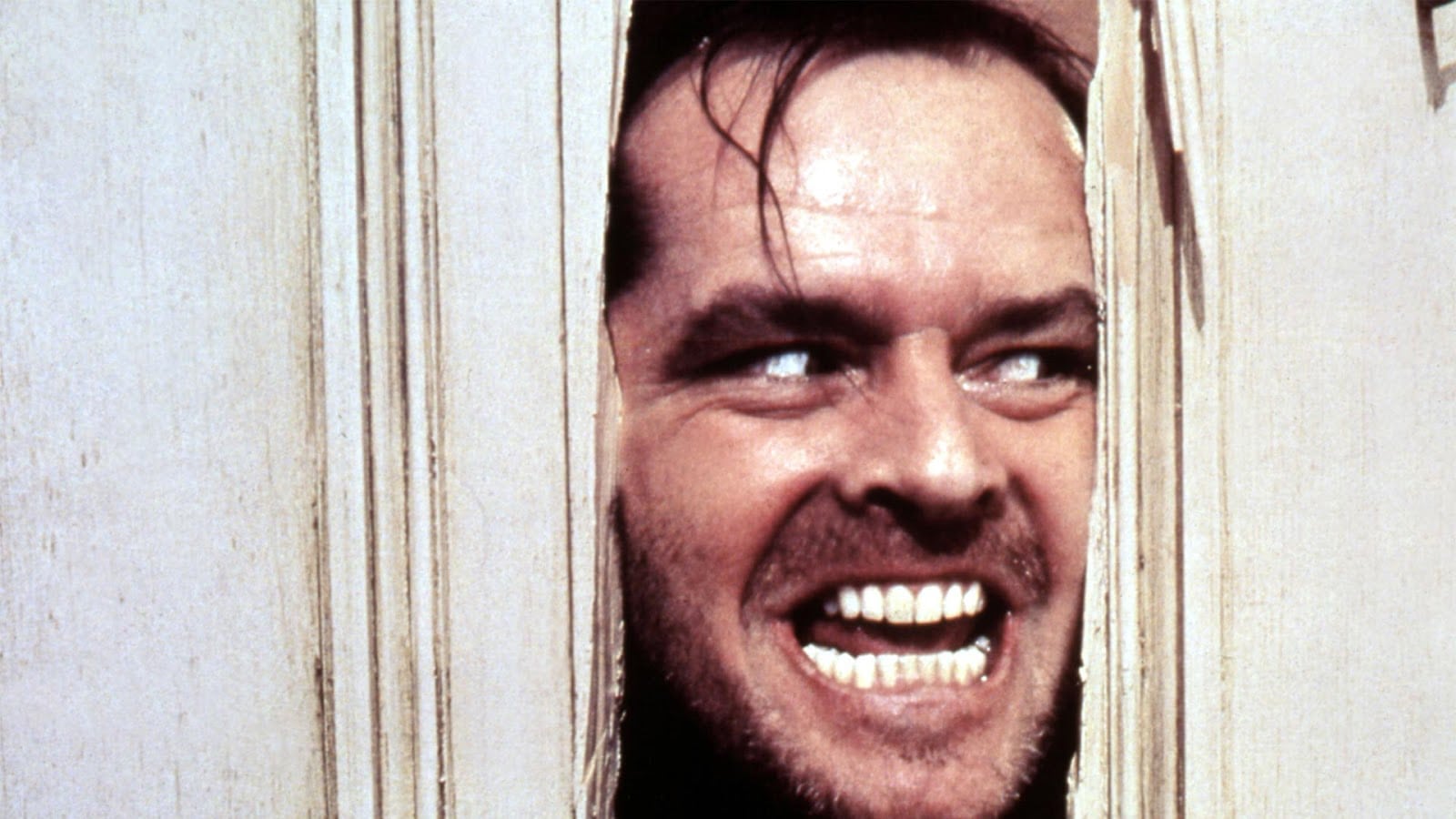




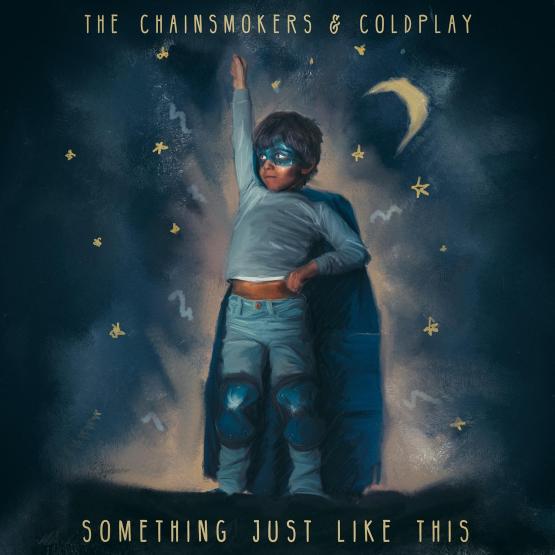
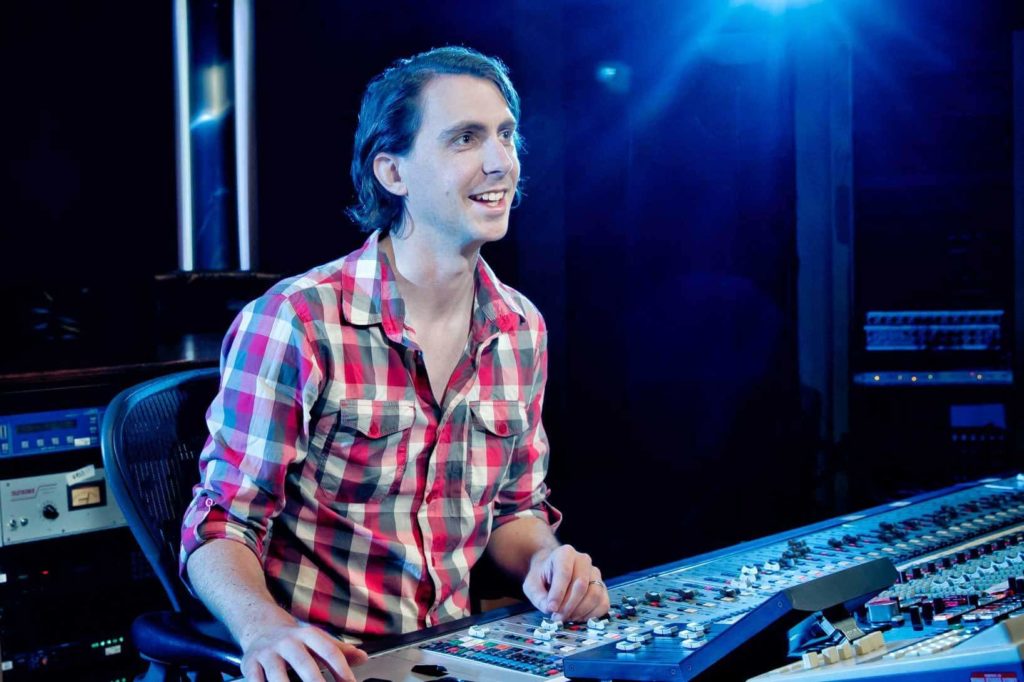
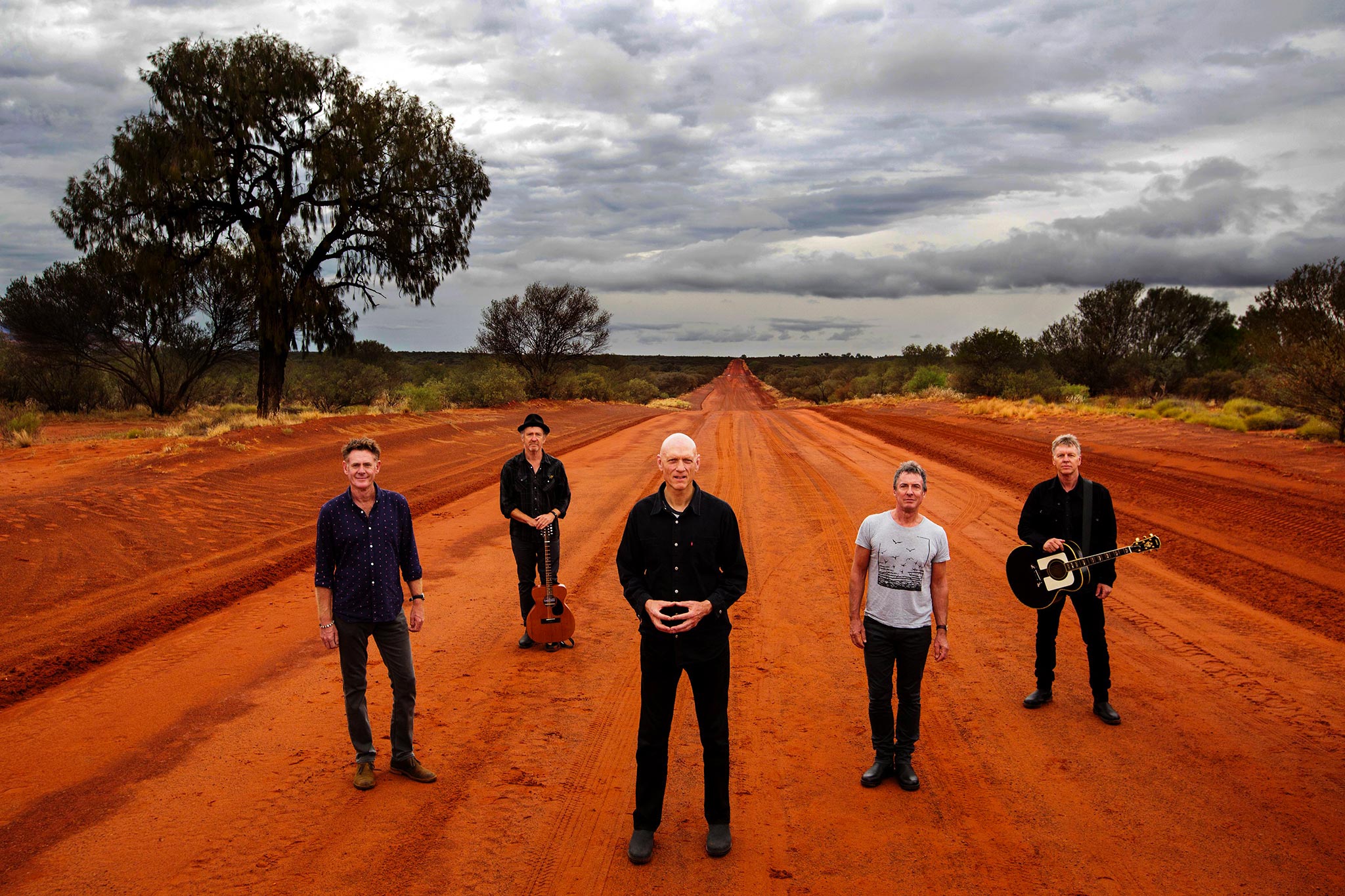
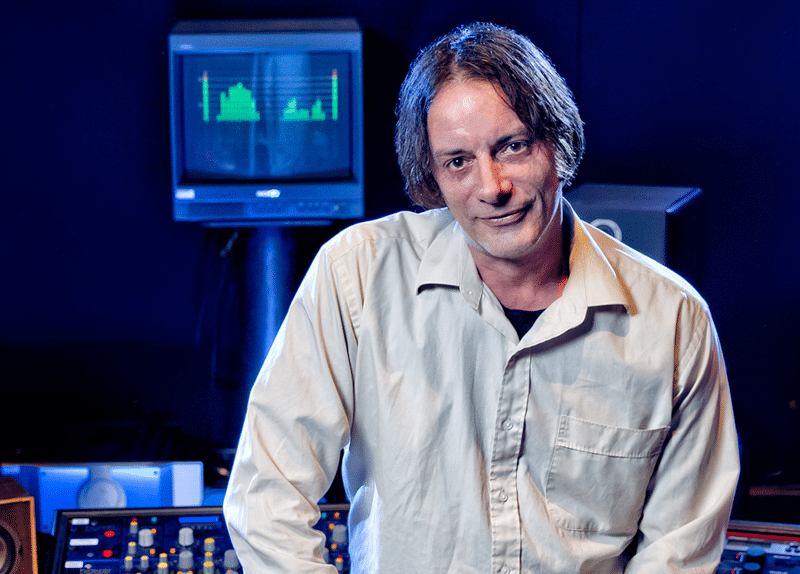
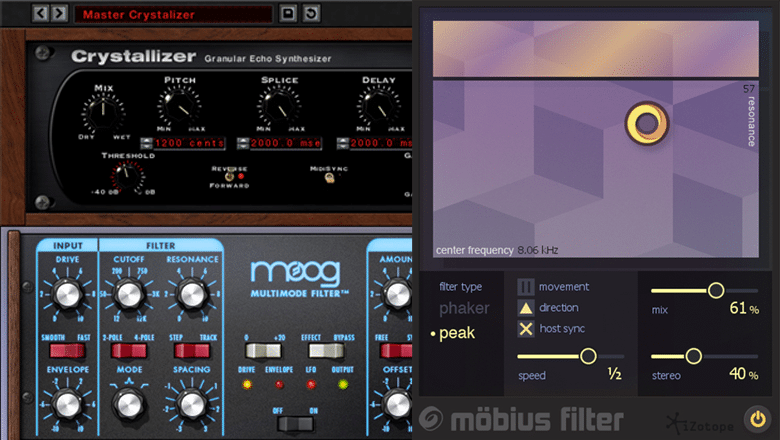
 1. Crystallizer – Sound Toys
1. Crystallizer – Sound Toys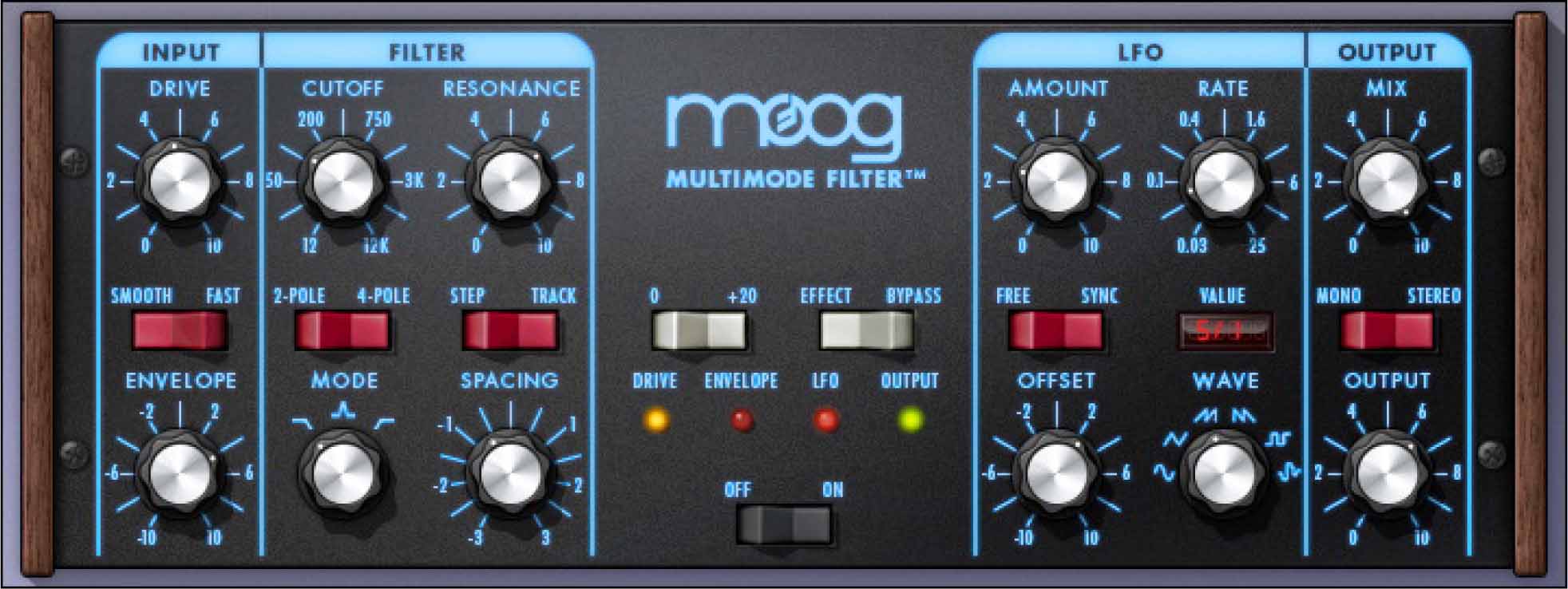 2.Moog Multimode Filter – UAD
2.Moog Multimode Filter – UAD